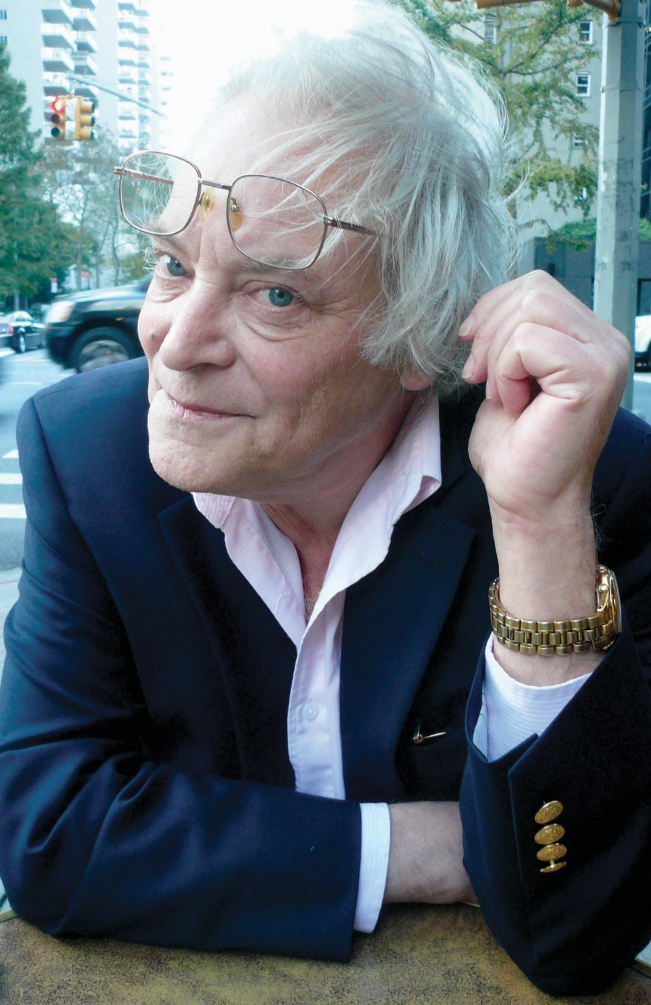Mitchell Jay Feigenbaum
DOI: 10.1063/PT.3.4348
Mitchell Jay Feigenbaum, a theoretical physicist whose inquiring mind and intense focus enabled him to contribute broadly across many fields, died of a heart attack on 30 June 2019 in New York City. Mitchell’s most celebrated work was his discovery of the universality of the period-doubling transition to chaos and the associated Feigenbaum constant, δ = 4.6692016 …. His predictions were confirmed experimentally in Albert Libchaber’s convection experiments in 1979. For their work, the two men shared the 1986 Wolf Prize in Physics.

Mitchell Jay Feigenbaum
PREDRAG CVITANOVIĆ

Born in Philadelphia on 19 December 1944, Mitchell graduated in 1964 at age 19 from City College of New York with a degree in electrical engineering. He entered MIT that same year but switched to physics. He received his PhD in 1970 with a thesis on particle physics under the supervision of Francis Low. A postdoctoral fellowship at Cornell University proved crucial to his career, as he was introduced to the renormalization group ideas of Kenneth Wilson and met Peter Carruthers. Following another postdoc at Virginia Tech, he was hired by Carruthers in 1974 to the rejuvenated theoretical division at Los Alamos National Laboratory. He moved to a professorship at Cornell in 1982 and to his final position at the Rockefeller University in 1986. In 1984 he was awarded a MacArthur Fellowship.
Mitchell was a true intellectual, reminiscent of the 18th-century natural philosophers, who considered everything in nature their purview and did science before the word “scientist” was even invented. Mitchell worked only on problems that excited him and insisted on understanding everything from first principles and on his own terms. He was also capable of ferocious concentration: During his study of period doubling, he often worked 48 hours at a stretch to keep everything in his mind.
Although Mitchell was extremely proficient with computing, and with computer algorithms in particular, he was skeptical of the computer’s ability to reveal dramatic new insights unless one had what he called a “conceptual schema” to interpret the results. He once remarked, “It is hard to learn by seeing. So why should the scales miraculously fall off when one stares at a computer screen?” Indeed, Mitchell’s discovery of universality arose because he was using an HP-65 calculator. Its slowness compelled him to examine carefully the parameter values of successive period doublings, and he recognized that they converged geometrically at the rate δ.
Mitchell’s broad interests and remarkable depth enabled him to contribute significantly to fields beyond physics. He made transformative contributions to cartography by inventing optimal conformal projections, which minimize distortions in shapes and relative areas of objects in planar maps of Earth’s surface. Further, he created a chaotic dithering program for efficient map labeling for maximum legibility and aesthetic appeal. Those inventions were at the heart of the innovative third edition of the Hammond World Atlas, published in 1992, which is truly a work of art.
In the 1990s, while serving on the National Research Council’s Committee on Next-Generation Currency Design, charged with suggesting ways to deter counterfeiting, Mitchell used his unusual insights into numbers to devise patterns that cannot be reproduced by even high-resolution digital copiers; the copiers will introduce new visible features in the copy. That work is reminiscent of Isaac Newton’s proposal to introduce milled edges in coins to prevent clipping.
His interest in computer algorithms led Mitchell in 1996 to cofound Numerix, a company that develops novel software algorithms to improve the speed and accuracy of calculations used to price financial derivatives.
Mitchell’s most recent studies were on visual perception. His goal was to infer “rules” associated with vision and perception by using carefully crafted applications of optics, supplemented by visual neurophysiology. A major work of his in that area remains unpublished, but we hope it will soon be available to the world.
Although Mitchell eschewed administrative responsibilities, he lent his ideas and prominence to important ventures, including the founding of the Center for Nonlinear Studies at Los Alamos, the creation of the US–USSR Chaos/ХАОС conferences, and the formation of the journal Chaos (published by the American Institute of Physics, which also publishes Physics Today). In the mid 1990s, with Rockefeller’s then president Torsten Wiesel, Mitchell founded the university’s Center for Studies in Physics and Biology, which anticipated efforts elsewhere to inject modern mathematics and physics into biology.
Mitchell was a unique individual who, in the words of the poet William Blake, was able “To see a World in a Grain of Sand, And a Heaven in a Wild Flower.” Mitchell discussed extensively the intricacies of the music of Schubert, Beethoven, and Wagner; the art of Rembrandt and Picasso; the philosophy of Kant and Schopenhauer; and the psychoanalysis of Freud. Indeed, Blake’s famous portrait of Newton taking the measure of the world with a compass provides an appropriate image to remember our remarkable colleague.
We are grateful to Mitchell’s many friends and colleagues for sharing with us their reminiscences of him.
More about the Authors
David Campbell. Boston University, Boston, Massachusetts.
Gemunu Gunaratne. University of Houston, Houston, Texas.
Eric Siggia. Rockefeller University, New York City.




